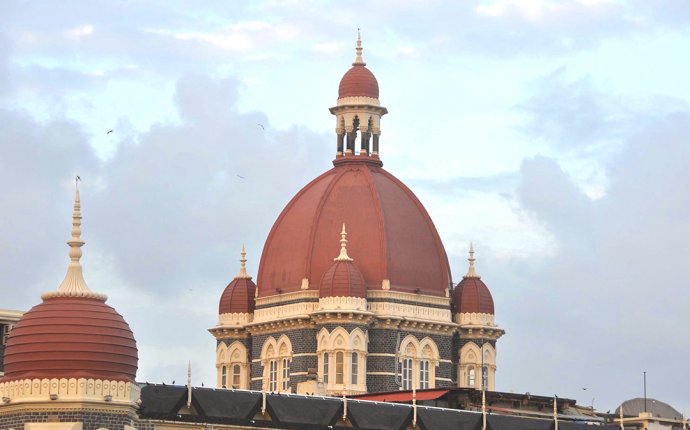
Great Western building Mumbai
India’s first fashion store, Ensemble, at Lion Gate in Mumbai, has just been relaunched. A part of the Great Western Building, a heritage monument across the Naval Dockyard, the building that housed the Bombay high court and then the Great Western Hotel, Ensemble, has, since its 1987 launch, always been more than a store. The idea of designer Tarun Tahiliani, his wife Sailaja and the late Rohit Khosla, it started as India’s most awe-inspiring shopping destination that also hosted biannual fashion shows.
Under Tarun’s younger sister Tina Tahiliani Parikh, who nurtured it from 1991 and is now the executive director, it soon began reflecting Indian fashion’s dialogue with consumer behaviour, becoming a school of style.
Today, that dialogue throbs with retail complexity and change. As do the store’s offerings. Redesigned by architect Bijoy Jain (who also handled its redesign in 2003), Ensemble, relaunched last month, is bigger, roomier, better stocked and so on. But more than anything else, there is a thoughtful curatorial and architectural vibe to it, a stronger cultural compass.
India’s creative industries are a beautiful mesh of inter-linked arts. Architecture can augment local design. A space created from locally relevant impulses then creates a context for fashion; it makes it easier to appreciate it in an ecosystem where it belongs. Jain’s restrained use of stone and wood, paint and pigment, height and width—Parikh calls him a mind she respects, a mind that evades stereotypes—and his collaborative work with colour artist Muirne Kate Dineen, expressed through the Rajasthani technique of araash, make Ensemble’s interiors compelling. Araash is a style of fresco painting that uses marble dust, slaked lime and pigment to create paint. The store has different levels and sections—bridal, diffusion, menswear, contemporary wear—strategically hung warm lights, beautiful rugs and carpets, large mirrors to reflect and fragment vanities. And, an old-style iron lift not in operation has been turned into display space.
While designer Anamika Khanna rules Ensemble’s couture areas, the menswear section offers a quick update on Indian menswear other than sherwanis. The accessories section is temptingly curated (take a look at jewellery by Kichu), and there is a dedicated handloom space that includes labels like bai lou and Vidhi Singhania. But it is the contemporary fashion section that speaks the loudest.
Starting almost from the entrance and going deep into the centre, it speaks of a prioritization in Parikh’s mind. “It stands for my belief in the work of contemporary designers. New York or anywhere else in the world, there is a certain homogenization of look. To buy something exceptional you have to pay an arm and a leg. But what young Indian designers create is distinctive fashion. It could resolve the reasonable amount of confusion clients have in dressing choices by giving them ways to create their own aesthetic.”
From bringing back Monisha Jaising to stocking contemporary wear from labels like Ekà by Rina Singh, Rashmi Varma, péro by Aneeth Arora, Peechoo, Payal Khandwala, 11:11/eleven eleven, tilla, Bodice, Lovebirds, Injiri, Cell Design, Akaaro, Maku Textiles, and Ikai by Ragini Ahuja, to name just some, there is a resonance of wearable, exciting, irreverent design skewed far away from bling. And as Parikh says, paired with street accessories and basics from fast fashion brands, they can stir up imaginative looks.
























